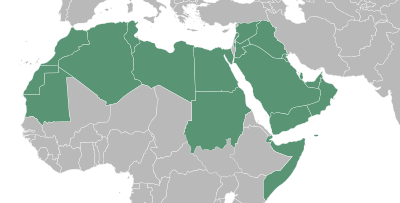Arab world facts for kids
The Arab world (Arabic: العالم العربي; pronounced: al-`alam al-`arabi) are the Arabic language-speaking countries stretching from the Atlantic Ocean in the west to the Arabian Sea in the east, and from the Mediterranean Sea in the north to the Horn of Africa and the Indian Ocean in the southeast. It consists of 24 countries and territories with a combined population of some 325 million people spanning at least 2 billion acres across two continents.
Largest cities in the Arab world
Table of largest cities in the Arab world by official city propers:
| Rank | Country | City | Population | Founding date | Image |
|---|---|---|---|---|---|
| 1 | Cairo | 16,225,000 | 969 AD | 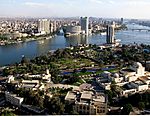 |
|
| 2 | Baghdad | 6,960,000 | 762 AD |  |
|
| 3 | Riyadh | 6,030,000 | 100–200 AD |  |
|
| 4 | Khartoum | 5,345,000 | 1821 AD | 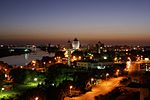 |
|
| 5 | Amman | 4,995,000 | 1948 AD |  |
|
| 6 | Alexandria | 4,870,000 | 331 BC | 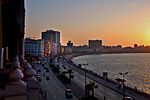 |
|
| 7 | Kuwait | Kuwait City | 4,660,000 | 1613 AD |  |
| 8 | Casablanca | 4,370,000 | 768 AD | 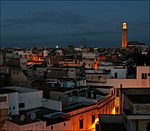 |
|
| 9 | Jeddah | 3,875,000 | 600 BC |  |
|
| 10 | Dubai | 3,805,000 | 7000 BC |  |
Images for kids
-
Salah Zulfikar and Faten Hamama in the premiere of Bain Al-Atlal ("Among the Ruins") in Cairo, 1959
-
The Great Mosque of Kairouan (also called the Mosque of Uqba) was founded in 670 by the Arab general and conqueror Uqba ibn Nafi. The Great Mosque of Kairouan is located in the historic city of Kairouan in Tunisia.
-
The Maghreb (Western Arab world)
-
Abbasid caliphate (750 – 1258 CE)
See also
 In Spanish: Mundo árabe para niños
In Spanish: Mundo árabe para niños


